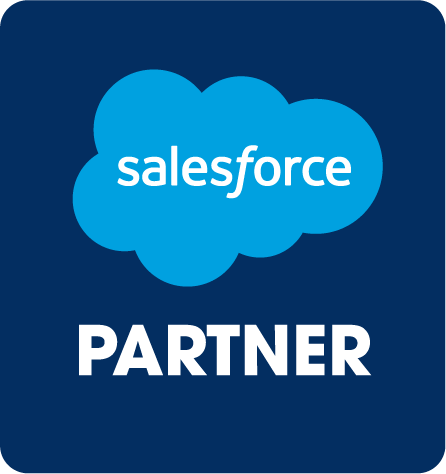
So you’ve decided to take the plunge and switch to the world’s number one CRM solution. Now you have a large team that isn’t familiar with the product. How do you bring them up to speed?
Training costs can easily spiral—even hiring a trainer temporarily is expensive—but there are ways you can approach what might seem a daunting task by being smart about it.
In the day-to-day running of your business, different team members bring different qualities to your organization, and the same can be applied when training your team in a new CRM solution.
With Salesforce being vastly reliant on users educating themselves through certifications and Trailhead (Salesforce’s web-based open-learning platform), it fits Salesforce’s ethos perfectly for your organization to train from within. Cross-training is a viable and cost-effective way to build your CRM team.
Interested in learning the most popular and in-demand skills and certifications among Salesforce professionals?
The big question is where do you begin? If you’re going to handle your training in-house then communication is absolutely key. It’s crucial that you are aware of who knows what and, most importantly, who needs to know what. It’s no use setting up teams working together to build up a knowledge base that is largely irrelevant.
Meet up regularly and discuss exactly what people need (and want) to know. If you have a smaller budget then it’s essential you make your Salesforce learning path as efficient as possible.
Salesforce training resources
You may be wondering what resources are available, and fortunately there are solutions to suit all budgets. Salesforce’s Trailhead badges are a fantastic (and free) way for your team to enhance their knowledge of the system and gain an understanding of other areas before you decide whether to start investing in certifications.
Trailhead badges can be completed online, meaning your employee can study at their desk but still be on-hand when needed. This flexibility means they can increase their knowledge base without being absent from your organisation.
Trailhead provides guided learning along different tracks for different roles, so whether you have Admins, Business Users or Developers, there will be paths provided for them. Similarly, there are modules starting from beginner working all the way up to advanced, meaning your teams can work online with minimal prior introduction to Salesforce and easily learn the basics of both their own role and others under the Salesforce umbrella.
Looking for more ways to upskill in Salesforce? We’ve collated the best free, Salesforce-accredited, and independent Salesforce training courses available to professionals.
Salesforce events and user groups
Attending events and industry meetups can be a great way to educate your team in Salesforce.
Not only do these sessions offer a chance for professionals to be coached by some of the most influential people in the ecosystem, but it’s also a fantastic networking opportunity—you’d be surprised how valuable it is to learn how different businesses utilize Salesforce and why.
With Salesforce being such a huge technology, official Salesforce events are spread out across several continents, and community-organized events are just as prominent. Check out our roundup of Salesforce events, with information on relevant user groups that your team could join and attend, depending on their product specialism and job role.
Time considerations
Blocking out some time to do the training will be a huge help, as the sooner they can complete this learning, the faster they can use it to benefit you and your team. Having said that, Trailhead Badges are easy to earn quite quickly, so it’s a very time- and cost-effective way to build up your CRM team’s knowledge base.
You could also send a team member to external training to get certified, but in the middle of establishing Salesforce in your business, do you really have the time (and budget) for someone to be offsite?
If not, it may be worth biting the bullet and expanding the team. A contractor is the obvious choice if you have the finances, but a conventional hire can provide you with your requirements without the initial high costs. Time is the main driver in your decision here—if you can spare it, then continue cross-training.
If you’re looking to train your team in-house, it may help to see how other businesses have done the same. Check out our case studies on building a team of Salesforce professionals.
Set up a buddy system
Once your team members have started collecting Trailhead badges and building up their knowledge, collaborating is another great way to gradually spread those new-found skills across your organization.
Rather than everyone working just on what they know, have colleagues from different areas buddy up; this way they’re learning at the same time as contributing to the project. It’s also a very good way to help foster an environment where people work with each other rather than against each other.
If you are using a buddy system, make sure there is structure to it rather than it being a series of visits that just turn into a catch-up, or an arrangement that can fall by the wayside if the department is busy.
Ringfence that time and set it aside for education. Better still, set it up as a working lunch and provide a meal for all parties involved.
A major benefit of different roles working together will be them having a far better understanding of the project as a whole. Discussing role expectations with different members of your CRM team in a meeting is fine, but seeing them in action gives a totally different viewpoint.
This will be achieved as your team members learn different roles beyond their own. Cross-training or upskilling one of your Admins to a Developer role will give them a far more intimate insight into what is required from a platform developer in context, which in turn offers a far more holistic view of the project timeline.


One problem with a buddy system like this is that you are reliant on what your people already know, and are absolutely limited to that until they learn more. The dilemma then is how to fill that gap. Do you pay for certifications or invest in someone that has them? It’s a decision that doesn’t necessarily have a right or wrong answer.
If you recruit correctly with a conventional hire, you will have a team player who can benefit your organization in the long term. If you have weaknesses within your CRM team, find out what they are and look for those strengths in potential candidates.
The key to this strategy is finding a team player who has the drive to help develop the people around them. If they have experience in guiding others, or a passion to learn more, they could be the perfect solution.
Implementing a new CRM system such as Salesforce can be done without having to spend huge sums on education and training. It’s just a case of making sure you make the right decisions along the way, in terms of both personnel and how you use them.
Envisage the end goal and what your Salesforce requirements are, and work backwards from there to make sure everybody is trained appropriately and has access to the relevant resources.
It takes planning and a good firm grip on logistics, but a little bit of hard strategic thinking will enable you to get the most value for money from the world’s leading CRM solution.
Interested in learning the most innovative and in-demand Salesforce products? Download our independent Salesforce Careers and Hiring Guide to find out more.

